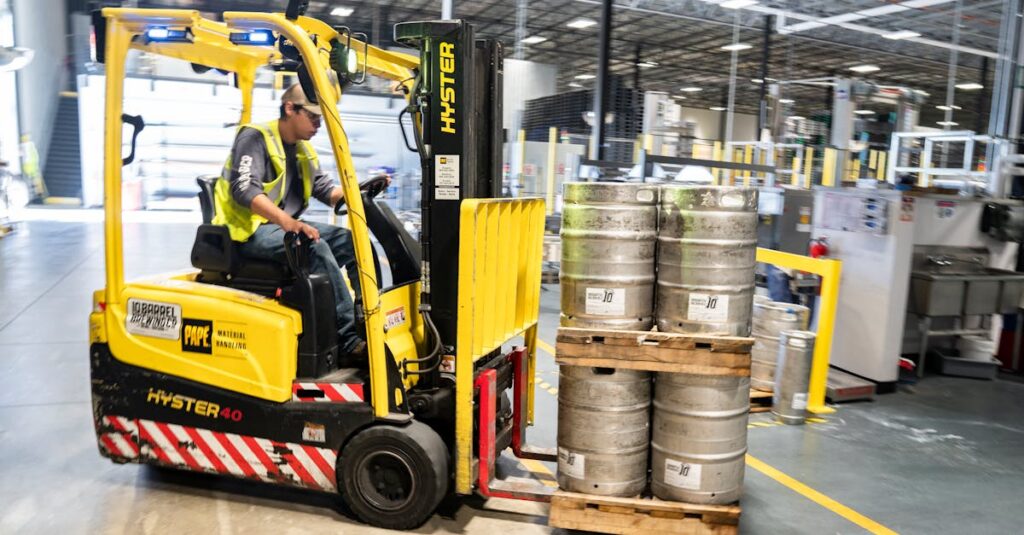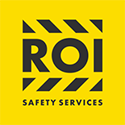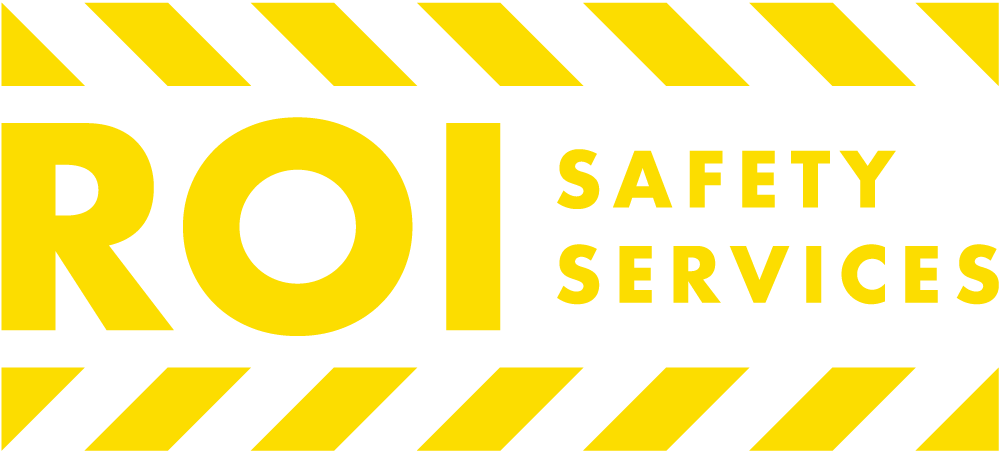
Operating a forklift might seem straightforward, but it’s a task that requires skill, knowledge, and adherence to specific safety protocols. Whether you’re a seasoned operator or new to the warehouse scene, understanding the basic rules of forklift operation is crucial. It’s not just about moving goods from point A to point B; it’s about ensuring the safety of everyone in the vicinity.
From wearing the proper safety gear to knowing the load capacity, the fundamentals of forklift operation form the backbone of efficient and secure workplace practices. Let’s dive into the basic rules for forklift operation!
Importance of Proper Training
Proper training in forklift operation isn’t just a formal requirement; it’s a fundamental necessity for maintaining safety and efficiency in the workplace. ROI Safety Services, a trusted provider of on-site OSHA safety training based in California, emphasizes the significance of rigorous training programs. These programs are designed to meet legal obligations and ensure that operators have the competency required for safe and effective forklift use.
The trainers at ROI Safety Services are experts in their field, capable of traveling to any client location statewide to deliver comprehensive training. This accessibility ensures that all employees have the opportunity to receive top-notch instruction. The curriculum focuses on several critical areas:
- Understanding Forklift Mechanics and Operations: Knowledge of how a forklift works is essential for safe operation. This includes understanding the machines’ limitations and capabilities.
- Safety Protocols and Emergency Procedures: Operators are trained to handle various workplace scenarios safely, minimizing the risk of accidents and injuries.
- Practical Skill Development: Hands-on training is crucial. Operators learn through actual operation under supervised conditions, ensuring they gain real-world experience.
Moreover, proper forklift training continues beyond the individual level. It’s part of creating a culture of safety within the organization. When employees are well-trained, they’re not only more proficient at their jobs but also more aware of their surroundings and the well-being of their colleagues.
Investing in high-quality training with ROI Safety Services can lead to significant benefits, including reduced workplace accidents, lower maintenance costs due to proper handling, and higher operational productivity. These outcomes directly contribute to a business’s overall success and profitability, highlighting the undeniable value of appropriate forklift operation training.
Understanding Load Capacities
One of the most critical aspects of forklift operation that operators must master is understanding and adhering to the forklift’s load capacities. Successful handling of this ensures safety and maintains the integrity and longevity of the equipment.
Forklifts are designed with a specific load capacity, which indicates the maximum weight they can safely carry. Exceeding this limit can lead to severe accidents, including tipping over, which puts the operator at risk and can cause significant property damage and potential harm to bystanders. Operators must know the load capacity of their forklift, which is typically found on the data plate, along with other important information about the equipment.
Operators should also be aware that load capacity is not a static figure—it can change based on factors like the load’s weight distribution, the height at which the load is carried, and the forklift’s attachments. For instance, adding an attachment to a forklift changes its center of gravity and can significantly reduce its rated capacity.
ROI Safety Services covers the complexities of load capacity calculation, considering attachments and load characteristics. This knowledge enables operators to handle materials safely, reducing accidents. Additionally, they train operators to assess unusual loads, fostering a safety-focused culture in workplaces.
Pre-operation Inspection Checklist
Before any forklift operation begins, a crucial step mustn’t be overlooked: the pre-operation inspection. This is not just about compliance; it’s about ensuring the safety of everyone in the vicinity and the longevity of the equipment itself.
Before starting any forklift operation, follow this checklist to mitigate risks effectively:
- Check for Physical Damage: Inspect tires, forks, and hydraulic hoses for wear or damage.
- Verify Fluid Levels: Ensure hydraulic oil, brake fluid, and coolant levels are within the recommended range.
- Test Safety Features: Check seat belts, lights, horns, and brakes for proper functioning.
- Review Load Capacity Plate: Understand the forklift’s limits to prevent overloading accidents.
- Check Operational Controls: Ensure steering, lift controls, and tilting mechanisms work correctly.
Adhering to this pre-operation inspection checklist doesn’t just comply with OSHA regulations. It instills a safety culture that can significantly reduce workplace accidents and equipment damage, proving to be an indispensable aspect of forklift operation. Through comprehensive training and a detailed understanding of forklift mechanics, ROI Safety Services empowers operators to make informed decisions, prioritizing safety and operational excellence in California’s diverse work environments.
Pre-operation Inspection Checklist
Before any forklift operation begins, a crucial step mustn’t be overlooked: the pre-operation inspection. This is not just about compliance; it’s about ensuring the safety of everyone in the vicinity and the longevity of the equipment itself.
Before starting any forklift operation, follow this checklist to mitigate risks effectively:
- Check for Physical Damage: Inspect tires, forks, and hydraulic hoses for wear or damage.
- Verify Fluid Levels: Ensure hydraulic oil, brake fluid, and coolant levels are within the recommended range.
- Test Safety Features: Check seat belts, lights, horns, and brakes for proper functioning.
- Review Load Capacity Plate: Understand the forklift’s limits to prevent overloading accidents.
- Check Operational Controls: Ensure steering, lift controls, and tilting mechanisms work correctly.
Adhering to this pre-operation inspection checklist doesn’t just comply with OSHA regulations. It instills a safety culture that can significantly reduce workplace accidents and equipment damage, proving to be an indispensable aspect of forklift operation. Through comprehensive training and a detailed understanding of forklift mechanics, ROI Safety Services empowers operators to make informed decisions, prioritizing safety and operational excellence in California’s diverse work environments.
Safe Operating Practices
When it comes to forklift operation, adhering to Safe Operating Practices is crucial not only for the operator’s safety but also for those working in proximity to these heavy machines. Training services provided by ROI Safety Services emphasize several fundamental rules to ensure forklift operations proceed without incident.
- Wear Appropriate Safety Gear: Hard hats, safety glasses, and high-visibility clothing reduce injury risk and improve visibility.
- Conduct Pre-use Inspection: Before operation, check for physical damage, fluid levels, and functional safety features.
- Proper Load Management: Understand load capacity, avoid overloading, and secure loads evenly on forks to prevent tip-overs.
- Maintain Clear View: Move with the load trailing obstructed views, use spotters or mirrors, and stay aware of surroundings to prevent collisions.
- Observe Safe Speeds and Traffic Regulations: Control speed, yield the right of way, and use signals when turning or stopping to avoid accidents.
By embracing these safe operating practices, trained by professionals from ROI Safety Services, forklift operators can significantly reduce the risk of accidents and ensure a safe and efficient work environment.
Conclusion
Adhering to the basic rules of forklift operation is crucial for maintaining a safe and productive workspace. Through the guidance provided by ROI Safety Services, operators are equipped with the knowledge to wear the proper safety gear, perform necessary inspections, manage loads with care, ensure clear visibility, and operate at safe speeds. These practices are not just recommendations but essential steps to prevent accidents and protect everyone in the vicinity. By embracing these guidelines, forklift operators contribute significantly to creating a safer, more efficient work environment for all. Reach out to ROI Safety Services today to get a quote for our on-site forklift training.
Frequently Asked Questions
What are Safe Operating Practices for forklift operators?
Safe Operating Practices for forklift operators include:
- Wearing appropriate safety gear.
- Conducting pre-use inspections.
- Managing loads properly.
- Maintaining visibility and following safe speed practices.
These measures ensure the safety of the operators and those around them.
Who provides training on Safe Operating Practices in California?
ROI Safety Services in California provides training on Safe Operating Practices for forklift operators. They cover essential topics such as safety gear, pre-use inspections, load management, maintaining visibility, and safe speed practices.
How do Safe Operating Practices benefit forklift operators?
By adhering to Safe Operating Practices, forklift operators can protect themselves and others from accidents, improve efficiency, and contribute to a safer work environment. These practices are crucial for preventing injuries and ensuring operational safety.

